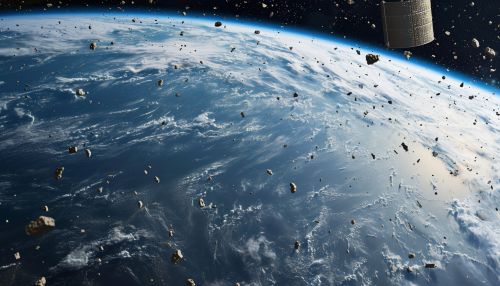Kessler Syndrome
Introduction
The Kessler Syndrome, also known as the Kessler effect, collisional cascading, or ablation cascade, is a theoretical scenario proposed by NASA scientist Donald J. Kessler in 1978. The scenario describes a future condition in which the density of objects in low Earth orbit (LEO) is high enough that collisions between objects could cause a cascade. Each collision generates space debris that increases the likelihood of further collisions, leading to the potential of rendering space activities and the use of satellites in specific orbital ranges infeasible for many generations.


Background
The Kessler Syndrome is particularly concerning because of the long-lasting presence of debris in LEO. Once debris from a collision is generated, it often remains in orbit for a considerable amount of time. The rate at which debris re-enters the Earth's atmosphere is less than the rate at which it is being created, leading to a net increase in the amount of known debris. This scenario is made worse by the fact that debris impacts at high velocities, often over 7.5 km/s in LEO, which is capable of causing catastrophic damage to functional satellites or manned spacecraft.
Mechanism
The Kessler Syndrome is a self-sustaining cascading collision process that is dependent on the spatial density of objects in LEO. The key factor is the number of objects in a given volume of space. As the number of objects increases, the probability of collisions also increases. Once the number of objects reaches a critical density, a chain reaction of collisions is triggered, leading to the creation of an increasing amount of debris, which in turn increases the likelihood of further collisions.
Implications
The implications of the Kessler Syndrome are far-reaching. If a cascading collision were to occur, it could render certain orbits around Earth unusable for generations, impacting weather forecasting, telecommunications, scientific research, and national security. It could also pose a significant risk to manned space missions, as even small debris can cause catastrophic damage to spacecraft.
Mitigation
Several strategies have been proposed to mitigate the risk of the Kessler Syndrome. These include the reduction of space debris through better management practices, the development of technologies to remove existing debris, and the implementation of international regulations and standards for satellite design and operation. However, the effectiveness of these strategies is yet to be fully determined.
